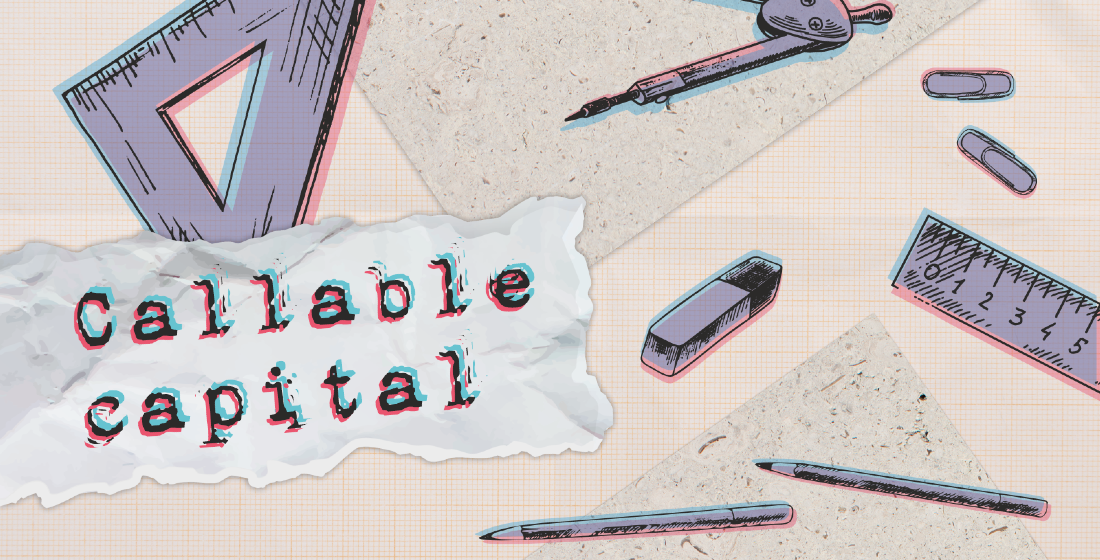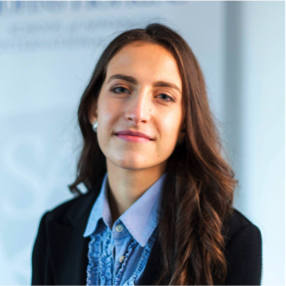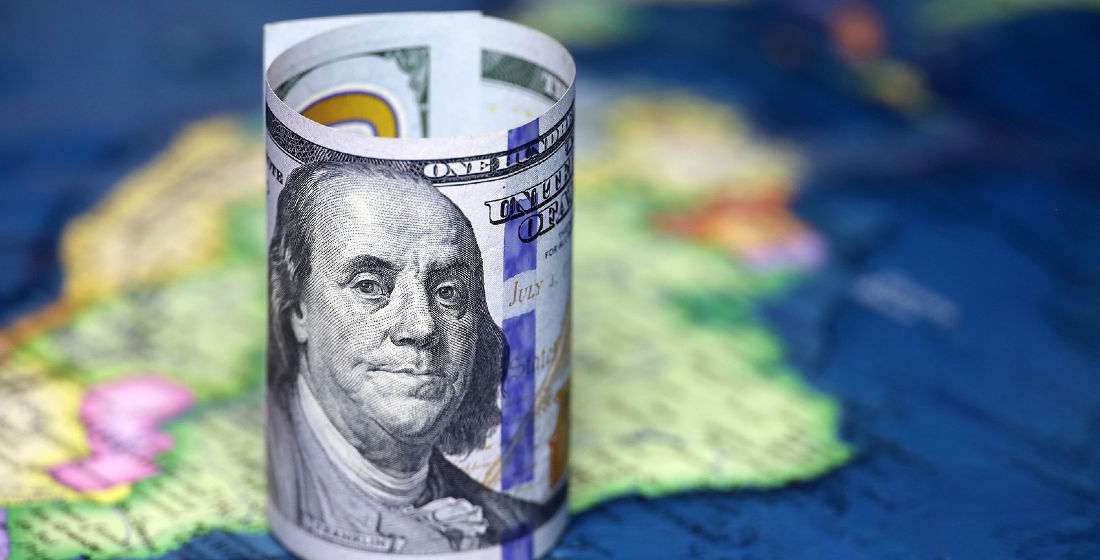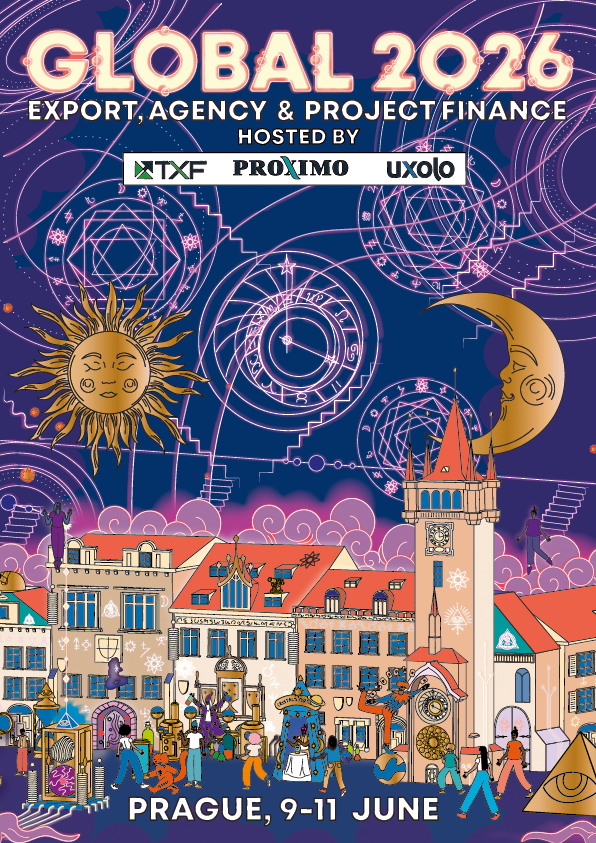Reimagining MDBs: ODI’s initial findings on callable capital
MDB callable capital represents an eye-watering $1.2 trillion in nominal terms, although it has yet to be properly quantified or harnessed. ODI, with funding from the MDB Challenge Fund, has been researching the issue. The final results for its report – ‘Maximising the Developmental Value of MDB Callable Capital’ – are expected by April 2024, but Bianca Getzel, researcher at ODI, outlines the preliminary findings to Uxolo.

Uxolo: Could you offer some background on what callable capital is and where it came from?
 Bianca Getzel (BG): Callable capital is an integral part of MDB capital structures. Starting with the World Bank’s inception in 1944 at Bretton Woods, it was established as a surety fund which would mollify the concerns of New York bond market participants who had had their fingers burned by foreign loan defaults during the 1930s. It became a critical factor paving the way for the World Bank’s first bond issue the following year and in its eventual receipt of a AAA bond rating in 1959.
Bianca Getzel (BG): Callable capital is an integral part of MDB capital structures. Starting with the World Bank’s inception in 1944 at Bretton Woods, it was established as a surety fund which would mollify the concerns of New York bond market participants who had had their fingers burned by foreign loan defaults during the 1930s. It became a critical factor paving the way for the World Bank’s first bond issue the following year and in its eventual receipt of a AAA bond rating in 1959.
To this day, callable capital effectively acts as a shareholder backstop to ensure that an MDB can repay its creditors even when facing an extreme financial shock. It matters because the value we assign to callable capital in turn determines the amount of development lending MDBs can do.
As a result of this successful model, subsequently founded MDBs copied the use of callable capital in their capital structures and legal statutes. Currently, shareholders have subscribed over $1.2 trillion of callable capital across the 14 largest MDBs. That is not to say that that nominal figure of $1.2 trillion is what that callable capital is worth but it is certainly more than zero.
Despite these large nominal amounts and its important guarantee function, we don’t know how much this key instrument in the MDB financial model is worth. The MDB statutes are ambiguous and the ability and speed with which a capital would be met by MDB shareholders is uncertain. The instrument is untested, as MDBs have never had to make a capital call. As a result, MDB management, shareholder governments and credit rating agencies (CRAs) have no clear guidelines on how to value it, especially in the absence of a regulator. Standard capital adequacy guidelines usually used for banks, like the Basel III framework, are not applicable here.
Putting it bluntly, what MDBs are doing to determine their lending rooms is financially engineering backwards from triple A. And this is not because MDBs are just obsessed with triple A: shareholders have voted on them maintaining that rating across all three major CRAs because it is the easiest way to feel comfortable these banks are not facing financial stress and will not call on shareholders to bail them out.
This conversation came to the foreground during the Covid-19 pandemic when all countries were in crisis – MDBs were asking their shareholders for more money and governments responded: ‘we’re not in a position to do that right now, but you have all this capital and are rated triple A, why are you coming to us?’. And so some large shareholders signalled that they are willing to adjust their risk appetites if MDBs are willing to put in the work: tell us how you think callable capital should be integrated into your capital adequacy frameworks (CAF) and provide evidence to back that up and assure your financial strength won’t be compromised.
Uxolo: What does that stress test model look like, from triple A to capital call?
BG: We are projecting a ten-year scenario of what an MDB balance sheet would look like if we hit it with various stresses based on default scenarios. Our preliminary analysis of the IBRD shows that theoretically, if the equity to loan ratio is the only concern, IBRD could trigger a soft landing where it slowly pulls back on lending to the point where it does not need to issue a call. That conclusion tells us it is in the hands of shareholders – do we want MDBs, like IBRD, to continue lending, particularly at a time of crisis, when we’d like for them to be countercyclical?
The preliminary modelling for this study has already illustrated the extraordinary financial strength of MDBs, even in the face of shocks many times greater than any experienced before. Still, there are plenty of ambiguities and uncertainties around this instrument that have yet to be clarified if there ever was a scenario great enough to warrant a capital call.
Firstly, MDBs are unclear on who can and how a capital call can be triggered. Most of the statutes spell out a division of shareholder resources that will be called on based on voting shares. The largest shareholders would therefore be most vulnerable to a call but, in the case of a ‘moderate’ call, we could see an interesting dynamic play out if shareholders with smaller voting shares refused to honour their capital payments on the basis of it being a nominal amount for a full MDB recapitalisation and the urgency of responding to whatever crisis triggered the call in the first place. We do not know what would happen – that is the point of what we are doing, predicting that risk and putting a figure on it.
Uxolo: How do MDBs leverage their callable capital without affecting their triple A ratings?
BG: The three largest CRAs – S&P, Moody’s and Fitch – differ on their approach to assessing callable capital but all three give uplift for callable capital in their methodologies to rate MDBs. S&P are the most generous and reckon most of the large MDBs could lend substantially more and still be rated AAA. Effectively speaking, the seven largest MDBs, according to our calculation for example, could release an additional $800 billion in lending and still be comfortably AAA under S&P’s methodology.
The CRAs we’ve spoken to for our study are willing to change their assessments when they see real proof. From what we hear they have been having a fantastic conversation together here today, the agencies and MDBs, but in my view the priority should be for MDBs to get together and say this is how we think callable capital should be integrated into our CAFs, provide evidence to back it up, and then say there you go the agencies and shareholders – presenting a unified front. That would allow them best to hold the pen and have the decision-making power because, at the end of the day, it is their capital adequacy, not the agencies’.
Uxolo: Do you think this unified MDB front forms part of a wider conversation around development finance needing to evolve to meet the demands of their member countries, in relation to the climate crisis and private sector mobilisation?
BG: The presence of callable capital in the first place did not allow MDBs to take on more risk as you might think, but actually contributed to non-borrower shareholders supporting them to operate in a highly conservative fashion to minimise any risk of a capital call.
I think, in general, CAF is the first step. Two presidencies ago, the G20 said they cared about this, we gave them the CAF report and now we are beginning to see its implementation. Seeing results will happen before the MDB mandate starts changing and they get a shot at a general capital increase (GCI - an increase in shareholder financing). There is a really important conversation going on right now which is focusing on climate, but we should all know that there’s no way we can begin financing climate at scale without getting results on CAF first – we need the extra lending room CAF can fund to unlock the transition.
However, there is a valid concern within the climate conversation of not taking money away from poverty alleviation or the other SDGs – we shouldn’t have trade-offs. With the mobilisation targets we’re putting alongside climate, we need to be very clear as to whether those intend to be climate-focused mobilisation targets or not.
There are pros and cons to this: to give you an example, let’s say a shareholder asked a development bank to dedicate 30% of its leveraged portfolio to climate – what incentive does that create? If you have a mandate like that, you know you need to do X amount of climate projects, which is going to push you towards big tickets like solar in middle-income countries. That’s where the private sector appetite is, but is that really where the biggest development challenges are?
As we reimagine the MDBs and redefine CAF, we need to make sure that we are having those nuanced conversations about how different KPIs and results will interact together. The biggest way to avoid them doing that is just having more money on the table, whether that is through CAF, GCI or creating new funds.
Mobilising private capital remains essential – we know that public finance is not going to finance the SDGs and is just a transition by itself. But it is very clear that this job has gotten a whole lot harder over the last few years: interest rates rising, institutional investors putting money in US T-bills that are returning them much more. The billions to trillions myth was debunked years ago. So what are we going to do differently now to mobilise at an even larger scale?
We have so many great technical solutions but we need to realise the limitations of those. Even if MDBs were distributing perfectly, mobilising at scale and pulling in all the investors in the available market universe – how many of them realistically have the appetite to go into emerging markets? Impact investors are squeezed and most institutional investors have solvency requirements that don’t allow them to go below investment grade. So even if we do all this – who are we mobilising? Will they actually want to put in the money and when will we reach that ceiling?
The second problem is pipeline. Do we even know that there are enough commercially viable projects in emerging markets that private investors would be interested in, even if MDBs change their view on returns from market returns to (below-market but) positive financial ones?
Uxolo: What type of tool is going to meet all the requirements that callable capital will demand, or will it just be an increase in ordinary capital lending?
BG: Callable capital is never going to be paid-in capital, it is not even capital. But we do not need to have a new enhanced version of it. Even the most conservative CRAs already acknowledge its importance as it is by giving an uplift for callable capital. I think once we are able to show its real value then it is going to lead to more lending – that is real. If more conservative CRAs integrated and viewed callable capital in the same way that S&P sees it then we would already have more lending power tomorrow.
But we should not see the agencies as antagonists of the development finance system – they have to respond to their bondholders. It is also a good thing they are being cautious because it is forcing MDBs to get real and really specify the narrative, tell them why this is a special guarantee, and show them that shareholders are ready for it.
The nice thing is that if we value callable capital in the right way, it is all the same – it is not a specific lending room that is “callable lending room”. MDBs will just have more money to lend out on their non-concessional arms – like the IBRD. They can do whatever they want with that – sure they could put it aside into a climate fund. You could have that fund on a separate balance sheet which can mobilise, originate and distribute as it wishes, which is not prone to all the same CAF requirements as the normal IBRD balance sheet.
MDBs have proven they can leverage money – turn one dollar into 10 or 40. Would a new fund be able to do the same? Any sperate fund that is created should aim to maintain the technical expertise of MDBs, the safeguards and due diligence that attract investors and should adopt all the features MDBs have that are needed to mobilise at scale.





